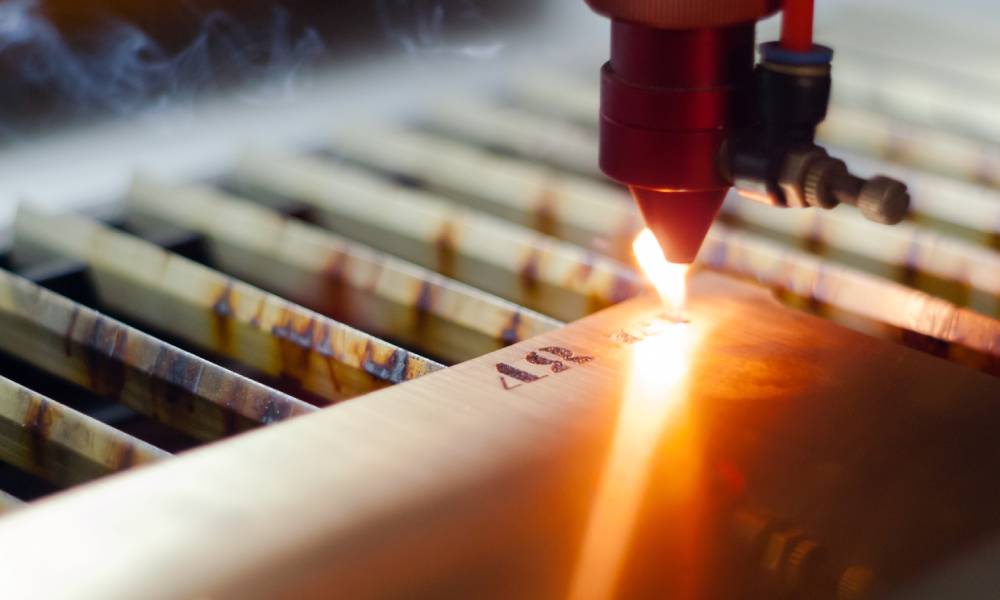4 Common Metal Marking Solutions for Manufacturing

In the vast and varied world of manufacturing, the ability to leave a lasting mark on your products isn’t just about branding; it’s a critical component of product identification, quality control, and regulatory compliance. If you need to mark metal for a manufacturing process or project, explore some of the most common solutions below, including engraving and laser marking.
Engraving
Traditional engraving involves using a sharp tool to carve designs or text into metal surfaces. Today, precision machines have taken over this process, providing consistent and high-quality marks. While engraving offers permanence and resistance to harsh conditions, it is relatively time-consuming. It might not be suitable for all types of metal surfaces, especially thinner or more delicate materials.
Laser Marking
Laser marking stands at the forefront of modern metal marking techniques due to its precision, speed, and flexibility. Focusing a high-powered laser beam onto the metal surface creates high-contrast marks without the need for direct contact.
This method is ideal for complex designs and serial numbers, offering a non-invasive way to mark metals without compromising structural integrity. Metal is just one of the many materials you can mark with laser marking machines, proving its versatility across various industries.
Dot Peen Marking
Dot peen marking, or pin stamping, involves using a pneumatically driven pin to create a series of dots that form numbers, letters, or logos. This method is revered for its durability and ability to produce clear marks on even the toughest surfaces.
Dot peen marking machines are relatively affordable and easy to use, making them popular for small- to medium-sized operations. While not as precise as laser marking, dot peen is an excellent option for serial numbers and simple logos, especially on rough surfaces.
Chemical Etching
Chemical etching uses a strong acid to corrode material away from parts of the metal surface, leaving a permanent mark. It’s a technique praised for producing high-detail marks at a relatively low cost.
However, the process involves handling hazardous chemicals, so proper safety measures and environmental considerations are imperative. Manufacturers that specialize in decorative processes or part identification largely favor chemical etching.
Choosing the Right Metal Marking Solution
Selecting the appropriate metal marking method depends on various factors, including the type of metal, the required durability of the mark, production volume, and budget constraints. Here are a few tips for making the best choice:
- Consider the material: Some metals are more compatible with certain marking methods.
- Assess the production scale: High-volume operations might benefit from faster methods like laser marking, whereas smaller batches might be better served by more cost-effective techniques like dot peen or chemical etching.
- Evaluate the environment: If the products must withstand harsh conditions, opt for more durable solutions like engraving or dot peen marking.
- Budgetary constraints: Laser marking equipment may represent a significant upfront investment but could offer savings in the long run due to its speed and efficiency.
Conclusion
In manufacturing, the common metal marking solutions we’ve discussed all offer product traceability, ensure compliance, and reinforce brand identity. From the permanence of engraving and the precision of laser marking to the robustness of dot peen and the cost-effectiveness of chemical etching, each method presents its own advantages and limitations.
Carefully consider your specific needs and constraints to select the metal marking technique that best suits your operational demands.





